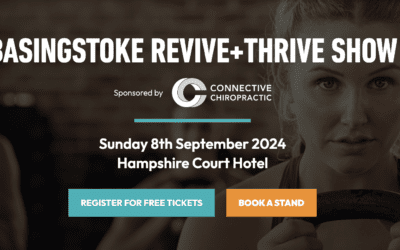Why Quick Health Fixes Don't Always Work
Many people in pain search for quick fixes to their pain… but they are not always as helpful as they may at first seem…
From detox diets to healthcare trends and fads, there is a market for improving health in the quickest way possible. This is why it is easy to reach for a quick fix pain killer whenever pain occurs. While these can mask the symptoms, it doesn’t actually get to the core of the problem.
While a quick fix may offer short-term relief, it may mean that the root cause of pain is being left untreated, uncared for and can actually get worse (depending on what is going on, of course). This may lead more pain in the future.
Let’s not forget too that many of the quick fix solutions for pain that we use often can create issues and side effects of their own too. Wouldn’t it just be easier to get on top it all from the start?
The Problem With Pain Killers
When it comes to aches and pains, there are two types of pain killers that are often touted as the cure for pain. These are non-steroidal anti-inflammatories (NSAIDs) and opioids. While these can both be effective at killing pain, it’s also true that they are not to be used for everything, should be used with caution (as with any medication) and can have their own effects on the body, which may be unhelpful.
Painkillers can be helpful where required. They often only mask symptoms however and can lead to dependency: Many people choose to go straight to painkillers without considering alternative treatment or undertaking other treatment alongside their painkillers. It’s quick, it’s easy – but is it all that helpful?
Both NSAIDs and opioids come with health warnings. For example, opioids are addictive and can result in overuse. NSAIDs are typically less addictive, but overuse can cause damage to the heart, kidneys and gut health. (Have you ever thought why you can only buy so many packets of paracetamol in the UK at a time? It’s because it’s actually pretty harmful and toxic if you take too much in one go.)
Ideally you want to start your health care management with the most conservative option first. This often starts off with diet, exercise or more natural choices. This may include physical therapies such as Chiropractic, Osteopathy, Physiotherapy, Massage or even just going to the gym.

Keeping Issues At Bay Rather Than Addressing Them Head-On
The problem with quick-fixes such as painkillers is that taking them can fast become a habit. This habit is not only about taking the painkiller, but also for reaching for quick fixes, that never really target the solution. As a result, our mindset and relationship with pain can change so we feel utterly trapped by pain, where actually it’s how we are dealing with it that’s the issue. Spending the time making medium to longer term solutions can help you to see the light at the end of the tunnel.
It is natural to choose a path of least resistance. This is why it is easy to take a pain killer whenever that familiar niggle flares up. However, it is more effective to put the measures in place which eliminates familiar niggles. Addressing the issue head-on means you no longer need to rely on quick-fix short-term relief… or at the least to use them only when the pain reaches levels that are less manageable.
How To Address Aches And Pains For Good
In many cases, long-term aches and pains come from adopting bad habits or lifestyle practices. Unless there was a significant event that triggered a pain or a known illness or pathology, it’s usually something that is sortable with the right guidance, know-how and knowledge. (That’s where Connective Chiropractic steps in.)
To keep pain at bay for good, it is crucial to consider the long-term goal and create the long-term strategy. Creating a pain care plan can help address any issues causing the pain rather than simply switching off from the pain. Not only does this strategy help you to take the pain away, but it also means you gain the skills, knowledge and know-how of how best to address an issue if it crops up again and also when it’s the right time to seek further professional, Chiropractic or medical assistance.
How To Create A Tailored Support Plan, long after your Chiropractic care has finished
The first thing to determine is what is causing the pain, where the pain is and to what level the pain bothers you. From there, it’s wise to pop in for an initial consultation so we can figure out how this interrelates with your medical history and understand better how your biopsychosocial health care choices have led to the aches and pains. From there we conduct a thorough assessment to find more about how we can help, whether Chiropractic is appropriate for you and also get an evidence-informed way of understanding exactly what is going on to create the pain in the first place.
What we do is not a quick fix. Though many social media pages show Chiropractic as a one-fix-wonder, the reality is that most people need a course of care, or at the least to work through certain stages of care to get relief most people expect.
By understanding the root cause, potential triggers and what to avoid, it is then possible to create a long-term support plan for you to follow- long after your Chiropractic care with us has completed. This means you can avoid future flare-ups or know what to do if things came back. From stretches to being more mindful of how you complete certain activities, there are lots of ways that you can manage and alleviate any pain without relying on pain killers and quick-fixes that don’t give you the long-term support you need. Similarly, you really will know when an ache or pain is just part of what you are doing, or every day life, or when it’s something more sinister that deserves the attention it commands: Not all pain is equal.
To find out more about how we can help create a long-term plan for your health and wellbeing, get in touch today.
Reserve your appointment now and save £50 OFF
Reserve and pay online for just £60 (usually £110)
Chiropractic for Sports Injuries in Basingstoke Athletes
Chiropractic Solutions for Sports Injuries in Basingstoke Athletes Basingstoke boasts a vibrant sports community, with athletes participating in various disciplines. However, physical activities can sometimes lead to injuries. Chiropractic care at Connective...
Benefits of Chiropractic Care for Office Workers in Basingstoke
Benefits of Chiropractic Care for Office Workers in Basingstoke In today's digital age, many office workers in Basingstoke spend prolonged hours seated at desks, often leading to various musculoskeletal issues. Whether it is due to repetitive tasks, poor postures or...
Revive and Thrive Show Complimentary Spinal Check
Speak to our leading chiropractic, massage and wellbeing team for free. We'll be at this year's Revive and Thrive Health and Wellbeing Show in Basingstoke! Along with our previous blog explaining why we are hugely excited to be sponsoring the event, this blog explains...
BASINGSTOKE
Connective Chiropractic Ltd,
55 Kingsclere Road,
Basingstoke.
RG21 6XG
01256 639 452

EMPOWERING WELLBEING WITH A CONNECTIVE CHIROPRACTIC MEMBERSHIP
Click here to discover more about our Ultimate Wellbeing Community
Registered Company (10788728) in England & Wales, Registered Address: 55 Kingsclere Road, Basingstoke, Hampshire. RG21 6XG.
Site content last edited 11 September 2023 (Version 1.4) (Version 1.0 - 1st November 2017). Last update Monday 11 September 2023
Copyright: Connective Chiropractic Ltd. All rights reserved. The Connective Chiropractic name and Connective Chiropractic logo are registered trademarks.



